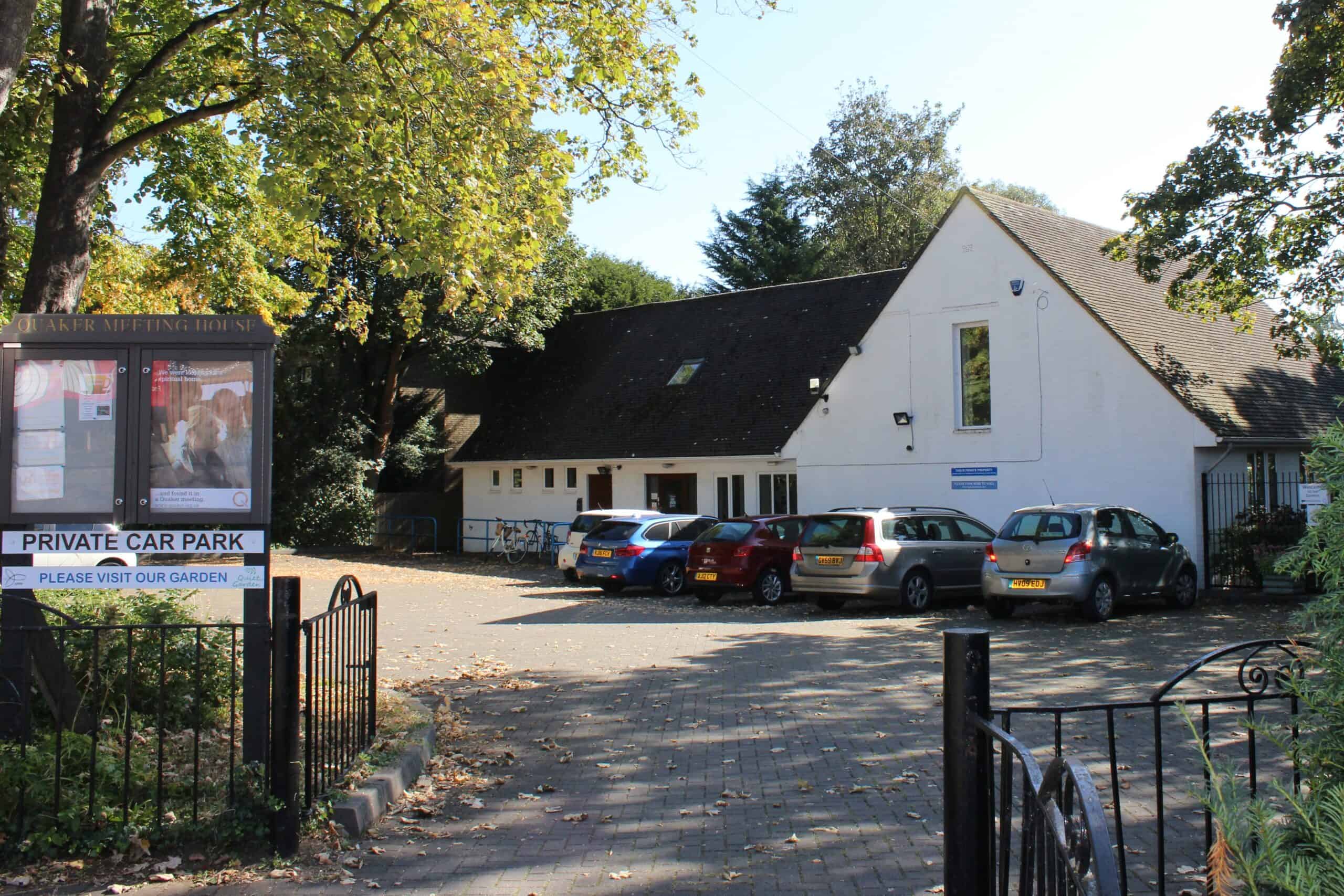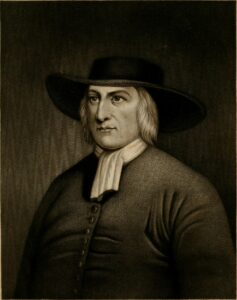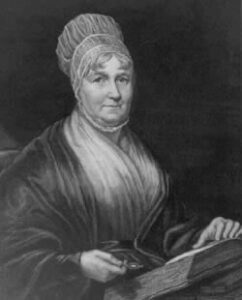Quakers in Peterborough

January PLHS Meeting
On a freezing cold January night, we welcomed Peter Larke to tell us about the Quakers in Peterborough 1660 – 2016.
He took us from the very beginning when meetings, sometimes clandestine meetings, were held in various venues around the Peterborough area, to the 1930s when funds were raised to build the Meeting House which is still in use today.
He also told us a little about some of the local people who were instrumental in this and brought along a selection of photographs to accompany his talk.- Author- Annette Martin
The Quaker Meeting House in Peterborough.
Situated on Thorpe Road and built on the site of an orchard the meeting house was built between the First and Second World Wars. The architect was Leonard Brown, a Quaker, and a worker at Baker Perkins. The extensive garden is a quiet restful place for peace and reflection https://www.peterboroughquakers.org.uk/
A Snippet of Quaker History.
Quakerism in England began to spread around 1650, after the English Civil War. They began mainly in the north of England and gradually spread their ideas on Christianity all over the country. Their beliefs that all people are equal were radical compared to the conventional Catholic and Protestant religions of the time. Quakers called each other Friends and a group of early activists and preachers who were called the ‘Valiant Sixty’ were instrumental in spreading their beliefs. These Friends or Preachers were also called the ‘ First Publishers of Truth’.
Three Prominent early Quakers

George Fox born in 1624 in Fenny Drayton, Leicestershire, England was considered to be the founder of Quakerism. Raised by devout parents, Christianity was very important to him, but he grew frustrated with how some Christians lived. In their daily lives. They would fail to act on the beliefs they recited in church. Fox wanted to be part of a ‘faith community that lived with integrity’. He rebelled against the religious and political authorities by proposing an unusual, uncompromising approach to the Christian faith. He later went on tours of North America and the Low Countries. He was arrested and jailed numerous times for his beliefs.
George Whitehead (1636–1723) was an early Quaker preacher and advocate of religious freedom. He lobbied for the right to practice the Quaker religion and was influential on getting the ‘Act of Uniformity’, the Bill of Rights of 1689, and the ‘Royal Declaration of Indulgence’. Although he suffered imprisonment and abuse for his beliefs. He, with other Friends, visited Peterborough in the year 1660 and after arriving he wrote, “I was much pressed in Spirit to endeavor for a Meeting in the City of Peterborow, tho’ I heard of no Friends there to receive me.”. Quakers from the surrounding area came together with him to preach and pray with him, but his visit failed to introduce Quakerism to Peterborough at that time.

Elizabeth Fry nee Gurney. Elizabeth whose image was featured on the British £5 banknote, was a well-known Prison reformer. Born in 1780 to a well-off Quaker family. In 1800, she married Joseph Fry who was also a Quaker. In 1813, on her visit to Newgate prison, she observed women and children in terrible conditions. Elizabeth began working for reform, campaigning for segregation of the sexes, female matrons for female prisoners, education and employment (often knitting and sewing), and religious instruction.
There are many well-known Companies, industries, and financial institutions that were started up and owned by Quakers. Cadbury, Rowntree, and Fry in the world of confectionery. Lloyds, Barclays and Friends Provident, financial institutions, Carr’s biscuits, and Huntley & Palmer biscuits are just a few. There are many more.
A few links for more information about the Quakers
https://www.friendslibrary.com/what-early-quakers-believed
https://www.quaker.org.uk/faith/our-history
https://www.quaker.org.uk/george-fox-400/who-was-george-fox
https://ourjourneypeterborough.co.uk/story/quaker-leader-visits-peterborough
